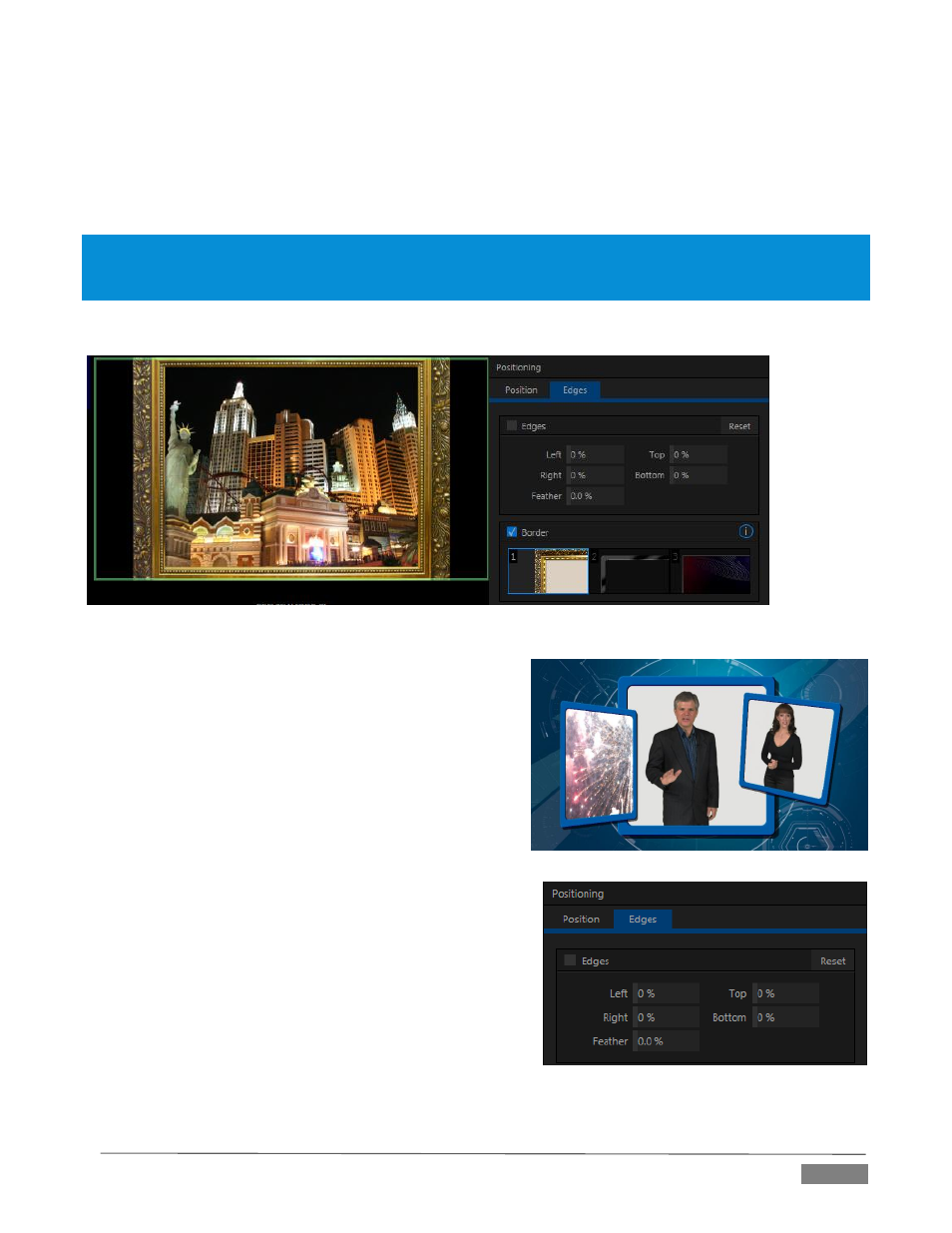NewTek TriCaster Advanced Edition User Guide User Manual
Page 107

Page | 95
E
DGES
The Edges tab (Figure 96) in the Positioning panel also has two control groups, Edges and Borders.
The Edges controls are similar to those found in TriCaster’s Input Configuration panel. However these Edges
settings are independent, applying even when the similar option in Input Configuration is not active.
Hint: As for most similar controls, individual Edge settings can be reset to their default values by double-clicking
with the Shift key held down. Restore default settings to all parameters of the Position or Crop control groups by
clicking Reset.
B
ORDERS
FIGURE 96
The Edges tab for TriCaster Advanced Edition systems also
provides each DSK, KEY and M/E layer with quick access
Border preset slots (Figure 96) to supplement the scale,
rotation, edge and other controls. These powerful border
effects can include full color overlays, backgrounds, matte
layers for ‘keyhole’ effects, and shadows.
This feature allows you to freely scale, position and rotate
various sources, add custom borders, overlays, shadows,
and so-on, over custom backgrounds or even live or
animated sources – all without special skills or resorting to
Virtual Set Editor. Since these are per-layer Positioner
effects, you can easily create custom multi-box compositions
in TriCaster’s M/Es (Figure 98).
In addition to hundreds of supplied borders, you can easily
create elaborate custom effects using Photoshop
®
. A template
PSD file is supplied to assist you to do so. You will find it in
the Borders folder, at C:\TriCaster\Effects\Borders.
You will find it is easy to create a custom border. You need
merely define a Photoshop format file with three (rasterized)
layers. The uppermost layer contains foreground elements (such as a bezel).
FIGURE 98
FIGURE 97
